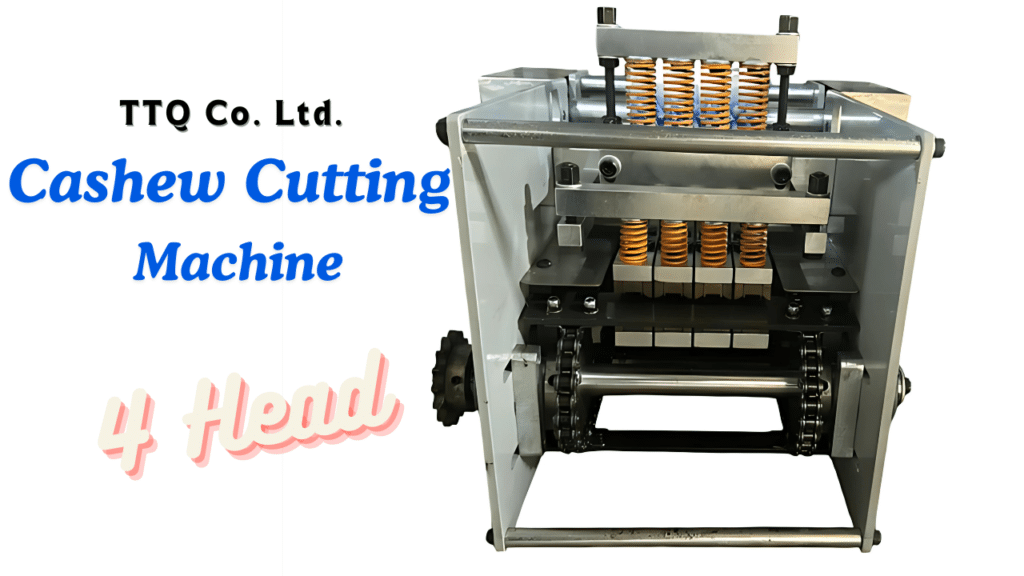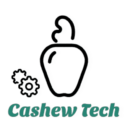Complete Guide to Choosing Your First Cashew Cutting Machine
A comprehensive guide to selecting the perfect cashew cutting machine for your processing unit. Learn about types, features, costs, and safety considerations for optimal investment decisions.

Tags: cashew processing equipment, cashew cutting machine, automatic cashew cutter, food processing machinery, cashew processing line
Selecting the right cashew cutting machine is crucial for any processing unit’s success. This comprehensive guide will help you make an informed decision by covering all essential aspects of cashew cutting equipment, from basic manual systems to advanced automatic solutions.
Understanding Types of Cashew Cutting Machines
Automatic Cutting Machines
Automatic cashew cutting machines represent the highest level of technology in cashew processing. These systems feature:
- Continuous feed mechanisms with auto-alignment technology
- Integrated sorting systems for maximum efficiency
- Production rates of 180-200 kg per hour
- Minimal operator intervention
- Advanced quality control features
Best Suited For:
- Large-scale processing units
- Export-oriented facilities
- Operations processing over 1 metric ton daily
Semi-Automatic Cutting Machines
Semi-automatic cutters offer a balance between efficiency and investment:
- Manual feeding with automated cutting mechanism
- Production rates of 80-120 kg per hour
- Operator-controlled feed rate
- Lower initial investment
- Easier maintenance requirements
Ideal Applications:
- Medium-sized processing units
- Growing businesses
- Facilities with skilled operators
Manual Cutting Systems
Traditional manual cutting systems maintain their relevance:
- Basic mechanical assistance
- Production rates of 30-50 kg per hour
- Minimal maintenance needed
- Lowest initial investment
- High control over cutting quality
Key Features to Consider
1. Blade Technology
Modern cutting machines offer various blade options:
- Stainless steel curved blades for precision
- Diamond-coated cutting edges for longevity
- Adjustable blade settings for different sizes
- Easy replacement mechanisms
- Blade durability ratings and lifespan
2. Feed Mechanism
The feed system significantly impacts efficiency:
- Auto-alignment features for consistent cutting
- Raw cashew size adaptation capabilities
- Variable feed rate control
- Jam prevention systems
- Material handling capacity optimization
3. Safety Systems
Essential safety features include:
- Emergency stop buttons in accessible locations
- Blade guards and protective shields
- Safety interlocks for moving parts
- Operator protection shields
- Warning indicators and alarms
Cost-Benefit Analysis
Initial Investment Range
Breaking down the investment requirements:
- Manual Systems: $2,000 – $5,000
- Basic cutting tools
- Simple safety features
- Essential spare parts
- Semi-Automatic: $8,000 – $15,000
- Automated cutting mechanism
- Basic feed system
- Standard safety features
- Automatic Systems: $20,000 – $40,000
- Full automation features
- Advanced safety systems
- Comprehensive control panels
Operating Costs
Monthly operational expenses typically include:
- Power Consumption
- Manual: $50-100
- Semi-Auto: $100-200
- Automatic: $200-300
- Maintenance
- Manual: $30-50
- Semi-Auto: $50-150
- Automatic: $150-300
- Labor Requirements
- Manual: 2-3 operators
- Semi-Auto: 1-2 operators
- Automatic: 1 operator
- Blade Replacement
- Quarterly costs: $100-300
- Frequency varies by usage
Production Capacity Guidelines
Small-Scale Operations (< 500 kg/day)
Recommended specifications:
- 30-50 kg/hour capacity
- Single-phase power supply
- Manual or basic semi-automatic systems
- Essential safety features
- Basic maintenance requirements
Medium-Scale Operations (500-2000 kg/day)
Optimal requirements:
- 80-120 kg/hour capacity
- Three-phase power supply
- Advanced semi-automatic systems
- Comprehensive safety features
- Regular maintenance schedule
Large-Scale Operations (> 2000 kg/day)
Industrial specifications:
- 180-200+ kg/hour capacity
- Industrial power supply
- Fully automatic systems
- Complete safety integration
- Professional maintenance team
Safety Features and Compliance
Essential Safety Mechanisms
Every cutting machine must include:
- Physical Protection
- Blade protection systems
- Operator shields
- Non-slip surfaces
- Emergency Systems
- Quick shutdown mechanisms
- Emergency stop buttons
- Safety interlocks
- Electrical Safety
- Proper insulation
- Grounding systems
- Overload protection
Compliance Standards
Look for machines meeting:
- CE certification for quality
- Food grade material compliance
- ISO standards adherence
- Local safety regulations
- Industry-specific standards
Investment Recommendations
For Startups
Best options for new businesses:
- Begin with reliable semi-automatic systems
- Focus on quality over speed initially
- Choose upgradeable machines
- Consider certified used equipment
- Prioritize vendor support
For Expanding Businesses
Upgrade considerations:
- Evaluate current production bottlenecks
- Calculate automation ROI
- Consider hybrid solutions
- Plan for future expansion
- Assess training needs
For Large Operations
Enterprise-level investments:
- Full automation systems integration
- Complete processing line coordination
- Advanced monitoring capabilities
- Comprehensive maintenance contracts
- Professional operator training programs
Making Your Final Decision
Consider these critical factors:
- Current Production Requirements
- Daily processing capacity
- Quality standards
- Available space
- Future Growth Plans
- Expected market expansion
- Product diversification
- Technology advancement
- Resource Assessment
- Available skilled labor
- Maintenance capabilities
- Power supply stability
- Budget constraints
Expert Tips
Always request:
- Machine demonstrations
- Sample processing trials
- Performance guarantees
- Training programs
- Warranty terms
Conclusion
Choosing the right cashew cutting machine requires careful consideration of multiple factors. Focus on matching capacity to needs, balancing automation with cost, ensuring proper safety features, and planning for future growth while maintaining quality standards.
Related Articles:
- Maintaining Your Cashew Cutting Machine
- Optimizing Cutting Machine Performance
- Safety Protocols in Cashew Processing
- Understanding Cashew Cutting Quality Standards
Call to Action:
Need help choosing the right cashew cutting machine for your facility? Contact our experts for personalized guidance and detailed specifications.
